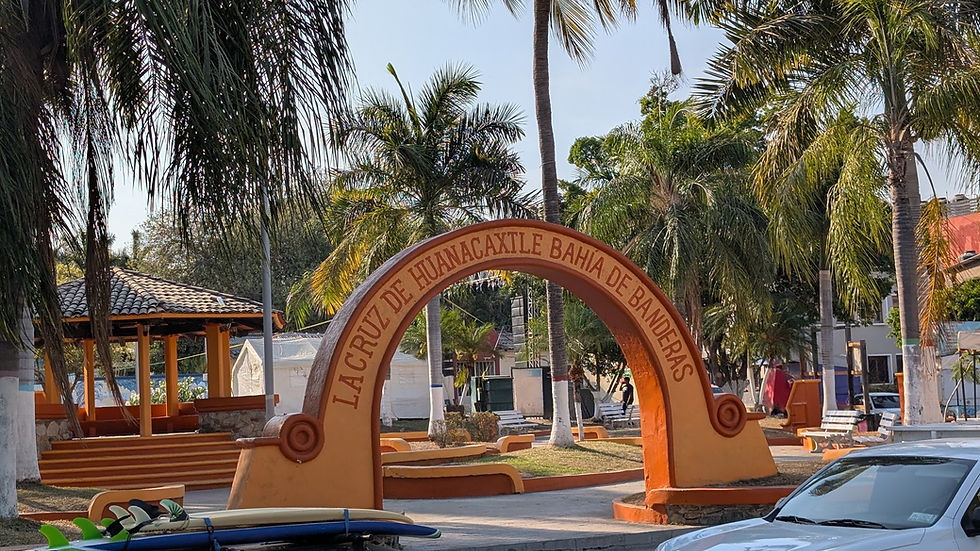New Batteries
- Capt. Eric
- Mar 15, 2022
- 3 min read
Enfin's electrical system is a rather complex affair. At the heart of it when we are at anchor are the heavy powerful batteries which power the whole boat, both 12V DC and 120VAC via an inverter.
There are 5 batteries on board. 4 "8D" and 1 "4D". 8Ds are large heavy batteries, weighing in at 185 pounds a piece, which the 4D is only slightly smaller. The big batteries are used for "house" consumption, that is everything that makes our life comfortable on board, from the fridge and freezer to the lights and TVs. The smaller battery is reserved for starting any of the 3 engines (main, wing or generator).
A a number of clever automatic connections allow all the batteries to recharge at the same time, yet make sure the engine battery stays fully charged. For emergencies or failure, house batteries can also be used to start the engines if needed.
Additionally, a number of clever automatic functions allows all batteries to recharge once the boat is connected to shore power, the generator is running, or either the main or wing engines are.
Shore power will change the state of charge as necessary based on the measured state of the batteries, while when we're not connected we can have the generator monitor the batteries' state and start or stop to recharge them as needed.
The 5 batteries had last been changed in 2012 so were getting to be 10 years old and showing clear signs of being at the end of their life span. The most obvious being that we got only about 50% of the nominal battery capacity when at anchor, meaning we had to run the generator a lot more often than with new ones.
It was time for new batteries.
I briefly considered upgrading to last generation batteries (lithium based) but the complexities in integrating completely different chemistry batteries into an existing already complex system are a little mind blowing, which is another phrase for extremely expensive.
New generation batteries have completely different charging profiles so all charging sources need upgrading: On Enfin that's 2 chargers and 2 alternator/regulators.
The big advantage of new generation batteries would be reducing the amount of time we need to run our generator when at anchor, but Enfin is pretty generator centric, like many luxury powerboats: We need the generator running to provide sufficient power for the water maker, or the washing machine for example. Since we need to run the water maker a couple hours a day, we will be running the generator at least that. Even more when you add a couple washing machine cycles at 2.5 hours each on a regular basis.
So if we have to run the generator anyway for our normal life, the advantage of new generation batteries quickly fade away, replaced only by their extreme costs.

Our main technician here kindly organized the whole battery swap for us, and all we had to do was show up at their service dock at a set day and time. Luckily it turned out to be a nice sunny day, making the job much more pleasant.
Of the 4 large batteries, 3 are fairly easy to access, in the lazarette, but the 4th one is deep into the bow of the boat, under the main berth, in the space we call "the basement".
There is no way that Di and I could handle taking the old batteries out, and putting the new batteries in. We were glad to have strong young men for that.


The batteries are all stored in safe compartments with heavy duty tie downs to ensure they will not move at sea. The old ones came out very easily and after a quick cleaning of each compartment, the new ones went in with minimum fuss.
We decided to go with boat terminal batteries as opposed to the previous car posts on the old ones. It's a much better setup and is fully compliant with ABYC guidelines.

The 4 batteries provide over 1,000 Amp hours, so care must be exercised that all connections are tight and will not slip. Connectors must be protected from inadvertent shorting, and heavy fuses must be installed within 12 inches of positive terminals.

There was some grunting, huffing and puffing from the strong guys down in the basement, but overall things went as smoothly as they could, thanks to a good preparation work from our tech.




With all batteries back in and connected Enfin came back alive. We had switched all systems off -a first in the 4 years we've had her- and all came back online.
The electronic brain controlling the battery charge took a while to recalculate things, but is now showing the state of charge of the new batteries.
A big expense, but a necessary one, and we're looking forward to long hours of use when we resume our cruising.



Comments